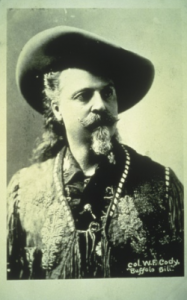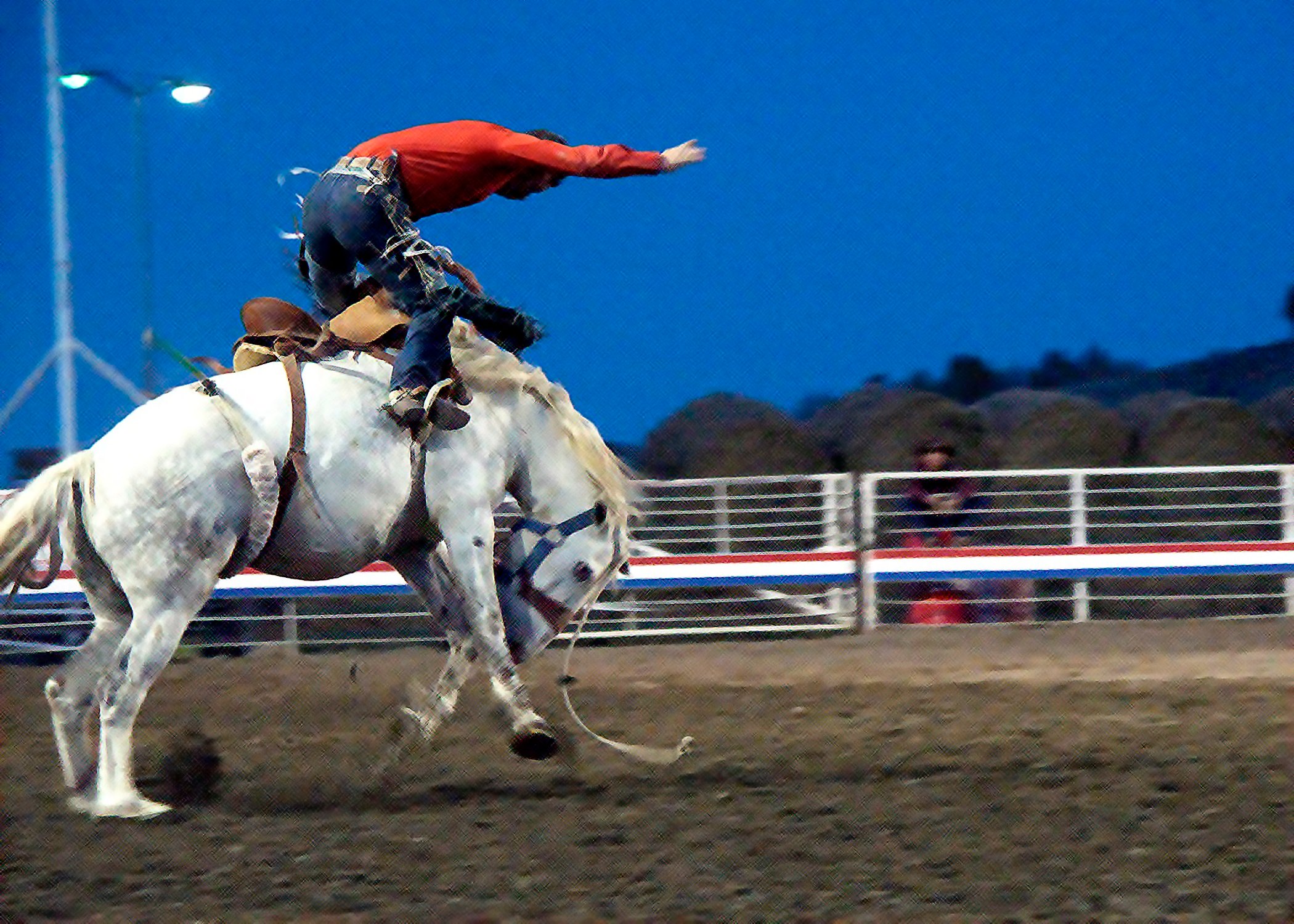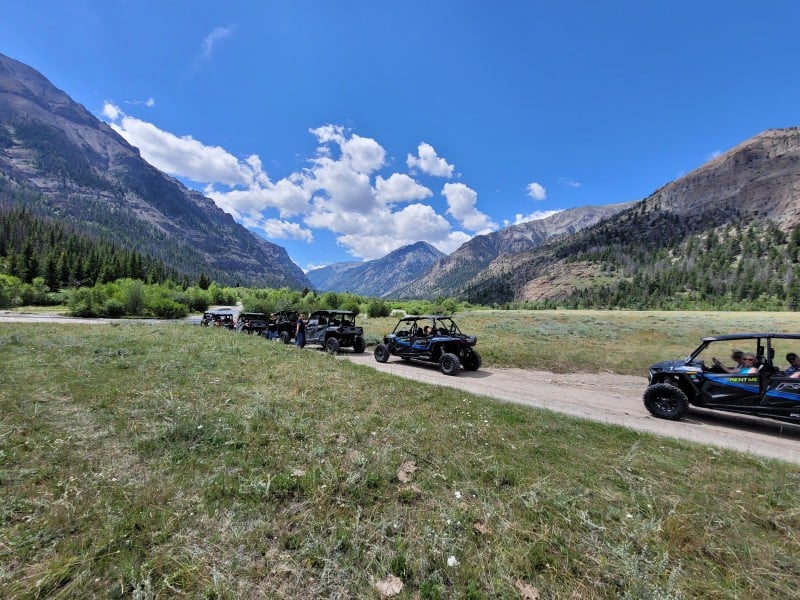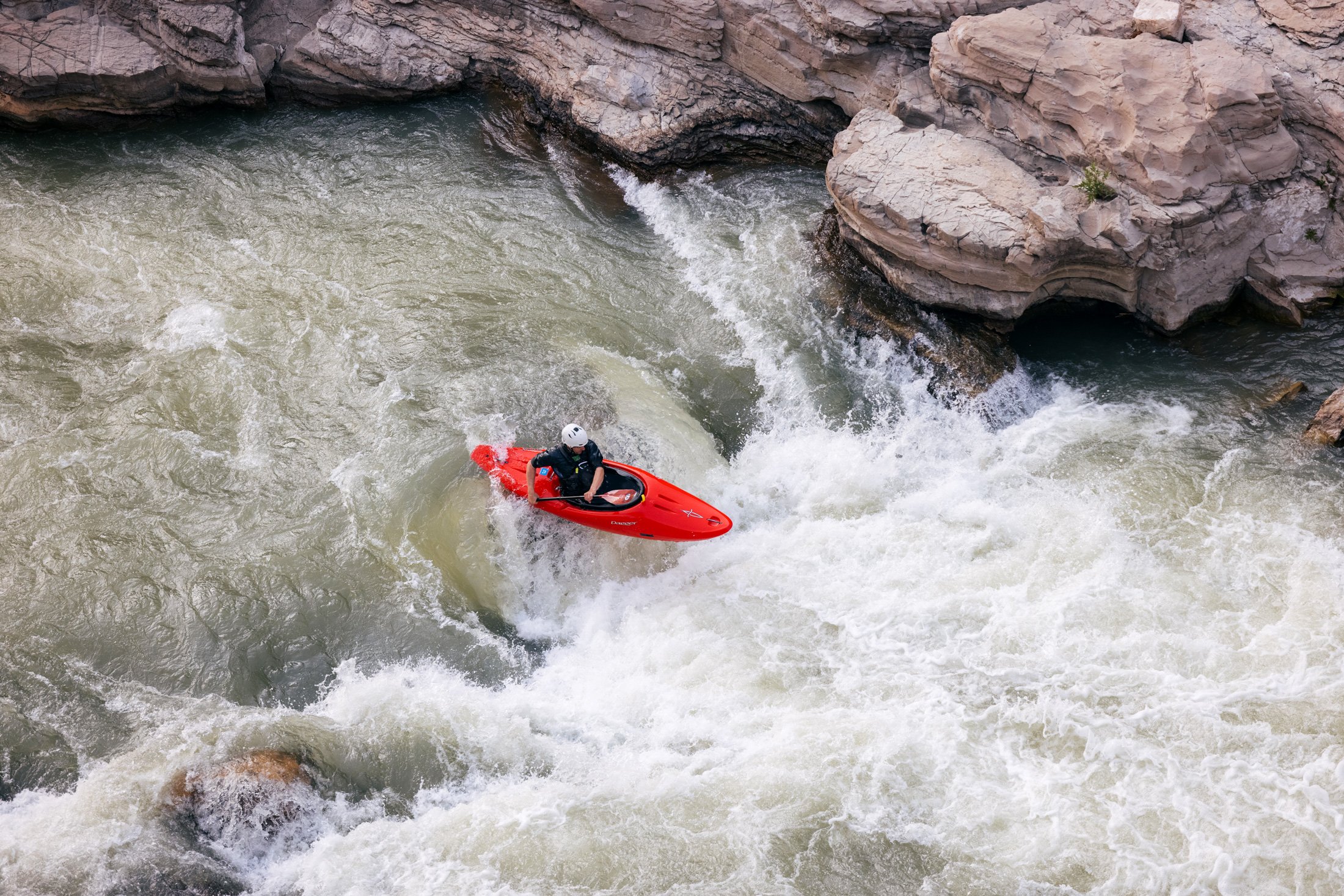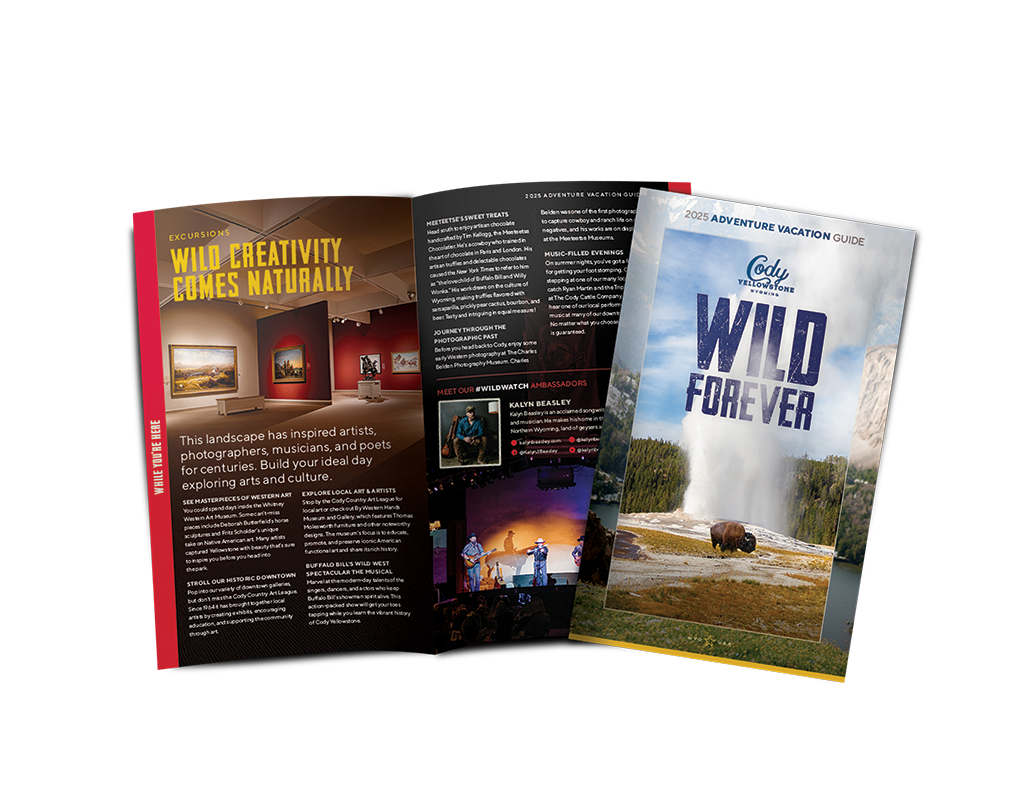While he was clearly a maverick who liked to make and play by his own rules, he realized that building a town would take the cooperation and support of many people. Formed in 1900, the Cody Club – an early version of the Cody Chamber of Commerce – provided the first formal governmental body. After six years of rather frivolous endeavors – one of its major accomplishments was to establish “dollar dinners” at the Irma Hotel as an excuse for a regular party – the organizers got serious. The club eventually held regularly scheduled meetings to explore ways to promote town interests.
The town progressed and even thrived as leaders pushed for improvements in mail service, roads, telephone service, water works and sewers. By the beginning of World War I, the town had established itself as a highly desirable gateway to Yellowstone National Park, and tourists had begun to sample Cody’s fast-growing services including hotels and restaurants before heading into the park.
Death and Conspiracy Theories
Sadly, Cody did not live long enough to see how his leadership and vision transformed a region into a tourism mecca.
While visiting relatives in Denver in early 1917, Buffalo Bill Cody died. Soon after, his wife Louisa arrived to claim his body and settle his affairs. While in Denver, Louisa was approached by representatives from the Denver Post newspaper and the city of Denver who offered her $10,000 each to bury Cody in the area where they felt his grave would be a tourist attraction. In need of cash – the Codys were broke when Bill died – and Louisa took the deal and returned to Cody, where townsfolk were understandably incensed about her decision.
Among those who were unhappiest were the town’s undertaker and two of Buffalo Bill’s old friends, Fred Richard and Ned Frost. These three hatched a plan to travel to Denver to switch bodies and bury Cody on Cedar Mountain where he had often said he wanted as his final resting place. When a local ranch hand died and his body went unclaimed, the three trimmed the unfortunate ranch hand’s beard in the Buffalo Bill style, loaded the body in the undertaker’s vehicle and drove to Denver.
At Denver’s Olinger Mortuary, the trio from Cody switched bodies and immediately left for Wyoming with the body of the real Buffalo Bill. In accordance with Buffalo Bill’s wishes, the friends secretly buried his body on Cedar Mountain overlooking the town he built. To this day, many residents of Cody – including the grandson of Fred Richard – believe that the body buried in is that of a Buffalo Bill lookalike, while the real Bill rests peacefully above the still-thriving town.
Or so the story goes.
Becoming a Destination
Changes came to Cody fast throughout the next two decades. In 1925, a museum. In 1928, an airport. Then schools, more hotels and restaurants, dude ranches, shops, a rodeo and a hospital. The enterprising and perpetually optimistic town of Cody was continuously enhancing its offerings; its future as a tourist destination seemed secure.
And then came World War II, a dark period for the entire country. One of a handful of Japanese-American internment camps, the Heart Mountain Relocation Camp was built on a rocky, desolate bluff between Cody and Powell. More than 14,000 Japanese-Americans were incarcerated within the barbed-wire enclosures of the bleak camp, which became Wyoming’s third-largest city. A few remnants of the camp remain today, and the award-winning Heart Mountain WW II Interpretive Center opened in 2011.
By the time the camp closed in 1945, Cody – and the country – was once again ready for some good times. The post-war economic boom included a population increase for Cody. The park continued to be a main draw for visitors. By 1957, annual visitation had increased to more than one million.
One of the most important players in the drive for tourists was the Buffalo Bill Museum, now the Center of the West. What began in a log cabin in 1917, as a historical tribute to the town’s namesake ultimately became a world-class destination that today draws more than 200,000 visitors annually. It expanded quickly, and today it is comprised of five museums in one: Plains Indian Museum, Whitney Gallery of Western Art, Buffalo Bill Museum, Cody Firearms Museum and Draper Museum of Natural History.
Buffalo Bill’s Cody/Yellowstone Country Today
Buffalo Bill’s Cody/Yellowstone Country has established a permanent place as a Western vacation destination with year-round recreational offerings. Countless adults of today remember visiting Cody on the classic East-to-West road trip that millions of families enjoyed.
Buffalo Bill’s Cody/Yellowstone Country is visited by more than 500,000 travelers every year. The area includes more than 35 hotels, B&Bs, guest houses, dude ranches, campgrounds and RV Parks. Other popular attractions include Heart Mountain WW II Interpretive Center, Cody Nite Rodeo, Dan Miller’s Cowboy Music Revue, Old Trail Town/Museum of the Old West, Pahaska Tepee, Cody Trolley Tour, Buffalo Bill Dam Visitor Center and the Irma Hotel.
In addition, the area continues to be renowned for its plentiful wildlife, and it offers fishing, horseback riding, mountain biking, rock and ice climbing, river float trips and kayaking. Park County features three golf courses, and downtown Cody offers a wide range of retail options from souvenirs to fine art.
***
Yellowstone Country is comprised of the towns of Cody, Powell and Meeteetse as well as the valley east of Yellowstone National Park.
The area of Park County is called “Buffalo Bill’s Cody/Yellowstone Country” because it was the playground of Buffalo Bill Cody himself. Buffalo Bill founded the town of Cody in 1896, and the entire region was driven and is still heavily influenced by the vision of the Colonel. Today its broad streets, world-class museum Buffalo Bill Center of the West and thriving western culture host nearly 1 million visitors annually.
The Park County Travel Council website lists information about vacation packages, special events, guide services, weather and more. Travelers wishing to arrange vacation can also call the Park County Travel Council at 1-800-393-2639.
Media contact:
Mesereau Travel Public Relations
(970) 286-2751
[email protected]
[email protected]








